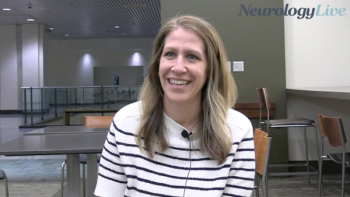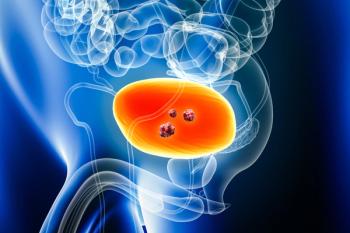
High-Dose Chemo Effective in Relapsed Testicular Cancer
High-dose combination chemotherapy followed by autologous peripheral-blood stem cell transplant produced durable remissions in metastatic testicular cancer patients who relapsed or failed to respond to traditional therapy
INDIANAPOLIS-High-dose combination chemotherapy followed by autologous peripheral-blood stem cell transplant produced durable remissions in metastatic testicular cancer patients who relapsed or failed to respond to traditional therapy, according to a retrospective study from Indiana University School of Medicine (N Engl J Med 357:340-348, 2007).
Standard cisplatin-containing combination chemotherapy cures about 70% of patients with newly diagnosed metastatic germ-cell tumors. Researchers at Indiana-where the standard therapy was pioneered by Laurence H. Einhorn, MD-conducted a retrospective review of their high-dose treatment in 184 consecutive patients with metastatic testicular cancer treated from 1996 to 2004.
Study protocol
The team, led by Dr. Einhorn, professor of medicine at Indiana University's Melvin and Bren Simon Cancer Center, gave 173 patients two consecutive courses of high-dose chemotherapy consisting of carboplatin 700 mg/m2 plus etoposide 750 mg/m2 intravenously for 3 consecutive days. The chemotherapy was followed 3 days later by an infusion of peripheral-blood stem cells. The waiting period between the two courses was 3 to 4 weeks. The other 11 patients received a single course of the high-dose treatment. Most responding patients received a maintenance dose of oral etoposide 50 mg/m2 daily for 21 days every 4 weeks for three cycles.
Prior to receiving the high-dose therapy, 110 patients had cytoreduction with one or two courses of vinblastine plus ifosfamide plus cisplatin.
Disease-free outcomes
During a median follow-up of 48 months (range, 14 to 118 months), 116 patients (63%) were continuously disease free. Of these patients, 104 (90%) were disease free for more than 2 years. Six additional patients had complete remission of disease with further therapy, four after receiving paclitaxel plus gemcitabine (Gemzar) and two after undergoing subsequent resection of a germ-cell tumor.
Patient outcomes differed according to a number of prognostic factors that were significantly associated with progression-free survival.
Among the 135 patients who received the treatment as second-line therapy, 94 (70%) remained disease-free, compared with 22 (45%) of 49 patients who received the therapy as a third-line or later treatment. Of the 144 platinum-sensitive patients, 98 (68%) were disease free vs 18 (45%) of 40 patients with progressive metastatic disease who were refractory to the standard platinum-based treatment.
Patients with a better response to initial chemotherapy (complete or partial response) had 73% disease-free survival vs 55% for those with a worse response.
Of the 61 patients who had favorable prognostic features-defined as a complete or partial response with normal serum markers after initial treatment and use of high-dose chemotherapy as initial salvage therapy-49 (80%) had disease that was in continuous remission for a median of 46 months (range, 25 to 112 months). Among the 123 patients with an unfavorable prognosis, 67 (55%) remained disease free.
"This review confirms that high-dose chemotherapy combined with a stem cell transplant can provide a cure for a group of patients with relapsed testicular cancer," said coauthor Rafat Abonour, MD, associate professor of medicine in the Division of Hematology/Oncology and associate dean for clinical research at the Indiana University School of Medicine.
Toxicity
Toxic effects of the high-dose chemotherapy were primarily myelosuppression, mucositis, nausea, vomiting, dehydration, peripheral neuropathy, and otologic abnormalities.
There were three sudden drug-related deaths among the patients. Two of the deaths were due to hepatic failure and one resulted from pulmonary toxic effects. Acute leukemia developed in three patients at 11, 21, and 60 months after high-dose chemotherapy. None of these patients had received maintenance ther-apy with oral etoposide.
Three patients developed acute leukemia, all of whom had been treated with high-dose chemotherapy as a third-line or later therapy. Although two of the leukemia patients died during follow-up, the third survived and the cancer went into complete remission after anti-leukemia therapy plus allogeneic bone marrow transplantation.
One patient developed glioblastoma multiforme 6 years after high-dose chemotherapy. He had received radiotherapy for brain metastases of the germ-cell tumor at the time of initial diagnosis.
"There should be little or no debate on the use of high-dose chemotherapy for a patient with a germ-cell tumor that is refractory to platinum-based chemotherapy or that is not cured by a cisplatin-ifosfamide regimen as salvage chemotherapy," the authors concluded.
They noted that a significant percentage of patients (45%) who received high-dose chemotherapy as third-line or later therapy remained disease free for a median of 46 months (range, 25 to 112).
"This is new medicine and it tells patients that cures are on the horizon," said coauthor Stephen D. Williams, MD, director of the Indiana University Simon Cancer Center.
Newsletter
Stay at the forefront of cutting-edge science with CGT—your direct line to expert insights, breakthrough data, and real-time coverage of the latest advancements in cell and gene therapy.












































